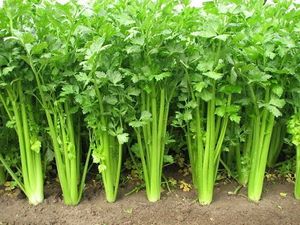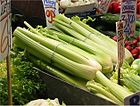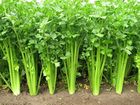Note: This is a project under development. The articles on this wiki are just being initiated and broadly incomplete. You can Help creating new pages.
Difference between revisions of "Apium graveolens - Ugragandhika, Celery"
(→List of Ayurvedic medicine in which the herb is used) |
(→Chemical Composition) |
||
| Line 9: | Line 9: | ||
==Chemical Composition== | ==Chemical Composition== | ||
| − | + | Celery yields an essential oil (3%), major constituent being d-limonene (50%) and phathalides and beta-selinene; coumarins, furanocoumarins (bergapten); flavonoids (apiin and apigenin).<ref name="chemical composition"/> | |
==Common names== | ==Common names== | ||
Revision as of 14:36, 22 June 2019
Apium graveolens var is a marshland plant in the family Apiaceae that has been cultivated as a vegetable since antiquity. Celery has a long fibrous stalk tapering into leaves. Depending on location and cultivar, either its stalks, leaves, or hypocotyl are eaten and used in cooking.Celery seed is also used as a spice; its extracts are used in Ayurvedic medicine.
Contents
- 1 Uses
- 2 Parts Used
- 3 Chemical Composition
- 4 Common names
- 5 Properties
- 6 Habit
- 7 Identification
- 8 List of Ayurvedic medicine in which the herb is used
- 9 Where to get the saplings
- 10 Mode of Propagation
- 11 How to plant/cultivate
- 12 Commonly seen growing in areas
- 13 Photo Gallery
- 14 References
- 15 External Links
Uses
Blood pressure, Indigestion, Uterus, Inflammatory, Hysteria, High blood pressure, Rheumatism, Diarrhea, Kidney complaints.
Parts Used
Chemical Composition
Celery yields an essential oil (3%), major constituent being d-limonene (50%) and phathalides and beta-selinene; coumarins, furanocoumarins (bergapten); flavonoids (apiin and apigenin).[1]
Common names
| Language | Common name |
|---|---|
| Kannada | |
| Hindi | Bari ajmod, Ajmod |
| Malayalam | |
| Tamil | |
| Telugu | |
| Marathi | NA |
| Gujarathi | NA |
| Punjabi | NA |
| Kashmiri | NA |
| Sanskrit | Ugragandhika, Vastamoda, Hayagandha |
| English | Celery, Wild Celery |
Properties
Reference: Dravya - Substance, Rasa - Taste, Guna - Qualities, Veerya - Potency, Vipaka - Post-digesion effect, Karma - Pharmacological activity, Prabhava - Therepeutics.
Dravya
Rasa
Katu (Pungent), Tikta (Bitter)
Guna
Laghu (Light), Ruksha (Dry)
Veerya
Ushna (Heating)
Vipaka
Katu (Pungent)
Karma
Prabhava
Habit
Identification
Leaf
| Kind | Shape | Feature |
|---|---|---|
| Simple | Celery leaves are frequently used in cooking to add a mild spicy flavor to foods, similar to, but milder than black pepper |
Flower
| Type | Size | Color and composition | Stamen | More information |
|---|---|---|---|---|
| Unisexual | 1-3cm long | Yellow | 5 | Flowers Season is June - August |
Fruit
| Type | Size | Mass | Appearance | Seeds | More information |
|---|---|---|---|---|---|
| rounded | 4-10cm long | With hooked hairs | single | {{{6}}} |
Other features
List of Ayurvedic medicine in which the herb is used
Where to get the saplings
Mode of Propagation
How to plant/cultivate
Prefers a rich light moist soil with some shade in summer[3]
Commonly seen growing in areas
Wild in Europe, Mediterranean region, Himalayas.
Photo Gallery
References
External Links
- Ayurvedic Herbs known to be helpful to treat Blood pressure
- Ayurvedic Herbs known to be helpful to treat Indigestion
- Ayurvedic Herbs known to be helpful to treat Uterus
- Ayurvedic Herbs known to be helpful to treat Inflammatory
- Ayurvedic Herbs known to be helpful to treat Hysteria
- Ayurvedic Herbs known to be helpful to treat High blood pressure
- Ayurvedic Herbs known to be helpful to treat Rheumatism
- Ayurvedic Herbs known to be helpful to treat Diarrhea
- Ayurvedic Herbs known to be helpful to treat Kidney complaints
- Herbs with Leaves used in medicine
- Herbs with Seeds used in medicine
- Herbs with common name in Hindi
- Herbs with common name in Sanskrit
- Herbs with common name in English
- Habit - Biennial herb
- Index of Plants which can be propagated by Seeds
- Herbs that are commonly seen in the region of Wild in Europe
- Herbs that are commonly seen in the region of Mediterranean region
- Herbs that are commonly seen in the region of Himalayas
- Herbs
- Apiaceae







